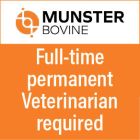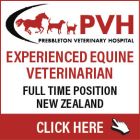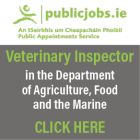UCD Research - September 2021
Finding threats in the wild that may affect us in the future
More and more antibiotics/antimicrobials that were once highly effective at protecting animals and humans against disease, are now becoming less and less effective as bacteria evolve ways to resist them
In association with


Dr Ana Pereira do Vale

Professor Nola Leonard

Professor Bryan Markey

Dr Gerald Barry
Some bacteria have evolved defence systems that destroy antibiotics if they come into contact with them, while others have developed tiny pumps that push the antibiotic away from them, much like a pump would remove water from a boat to stop it sinking. Our environment is now teeming with traces of antibiotics while domestic animals and ourselves are frequently being prescribed doses.
Antibiotic resistance
A prescription of antibiotics for a sore ear or diarrhoea is normally very effective at stopping the infection, but every time an antibiotic is used, there is the potential for a bacterium to randomly evolve and be selected due to this better way of surviving the treatment. If the treatment isn’t optimal or the prescribed course isn’t appropriate, then that selects even more effectively the bacterial populations with an enhanced chance of surviving in the environment, in animals, and in humans.
Over time, the bacterial population can evolve such that treatment becomes ineffective and a completely different antibiotic must be used. Unfortunately, we are now reaching a point where certain bacteria are resistant to multiple types of antibiotics so finding effective treatments is becoming increasingly more challenging in both human and veterinary settings.
There are multiple ways of combating antibiotic resistance. One approach is to carry out searches in wild populations to identify the existence of resistance genes in bacterial populations in species that haven’t been medicated with antibiotics and investigate the potential source of these bacteria/antibiotic resistance mechanisms. To tackle this, Dr Ana Pereira do Vale, Professor Nola Leonard and Dr Gerald Barry have established a project in collaboration with University of California, Davis and Seal Rescue Ireland, to collect and analyse samples from wild seals from around the Irish coast. Seals are apex predators, sitting at the top of the food chain. They interact with numerous marine animals as well as birds and other land mammals. Faecal samples have been collected and tested for bacteria with antimicrobial properties. Amazingly, bacteria are present that have multiple resistance markers despite the fact that these are animals that have never been treated with antibiotics in their lives! Some samples even contained bacteria resistant to critically important antibiotics that are normally reserved for specialist cases in humans and animals.
This illustrates how bacteria with resistance are plentiful and widespread, even in the wild. Antibiotic resistance is a growing cross-sectorial problem and there is an urgent need to develop new and alternative therapies to keep pace with it and even overcome it.

Timeline tracking approval/release of antibiotics versus identification of resistant germs.
Emerging viruses
As we have seen from the COVID-19 pandemic, there is potential for the next big human infection to come out of the wild and impact on the human population in a major way. This threat exists for animals too with the potential for emerging viruses to cause widespread disease in unexpected ways. One way to combat this is to carry out surveillance across the world, eventually screening and identifying all known viruses worldwide. In that way, analysis can predict what could have the potential to infect humans and cause disease. This will also allow preparatory vaccines and antiviral drugs to be developed so that those viruses are prevented from causing damaging outbreaks in the first place, safeguarding public health.
Professor Bryan Markey and Dr Gerald Barry have led a project sampling insects and animal tissues in sub-saharan Africa to test for different types of viruses. In some parts of Africa, due to a lack of infrastructure and resources, it can happen that people or animals get sick, and a diagnosis is not confirmed. Such illnesses may be caused by unidentified viruses that may in the future learn to spread more effectively in human or/and animal populations. The project involved firstly trapping flying insects and visually separating them into different groups (mosquitoes and midges mainly). The research team then extracted the insects’ genetic material and used PCR and next generation sequencing to screen for the presence of different viruses. This work has allowed collaborations with, and training of, local African researchers to carry out molecular surveillance work and has led to the identification of viruses in areas where they have not been seen before. This work will inform local medical and veterinary teams and will also help to build up databases of viruses in these regions.
In association with


Dr Ana Pereira do Vale
Assistant professor,
University College Dublin

Professor Nola Leonard
Assistant professor,
University College Dublin

Professor Bryan Markey
Assistant professor,
University College Dublin

Dr Gerald Barry
Assistant professor,
University College Dublin








